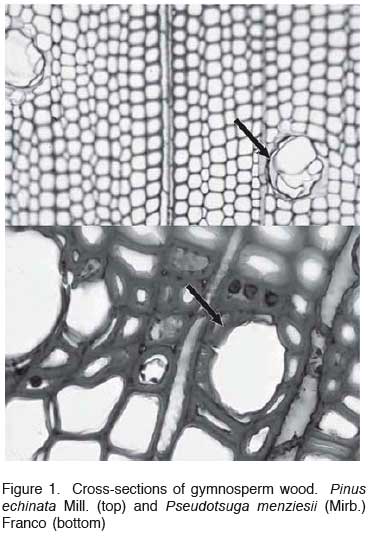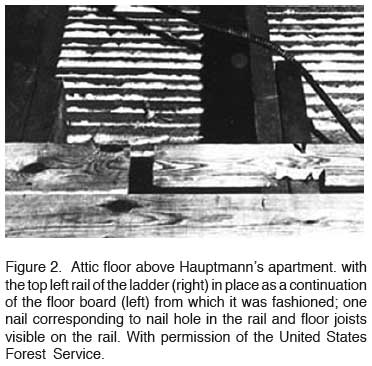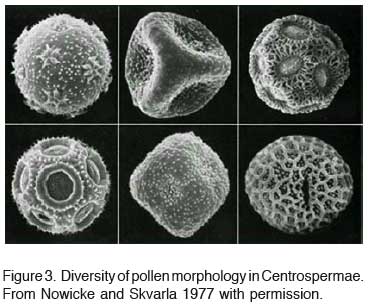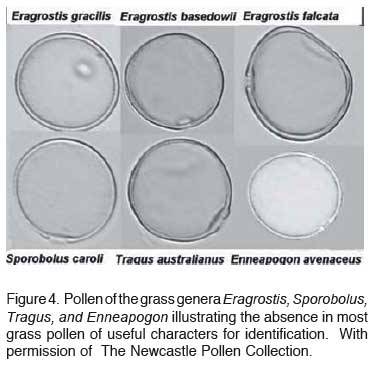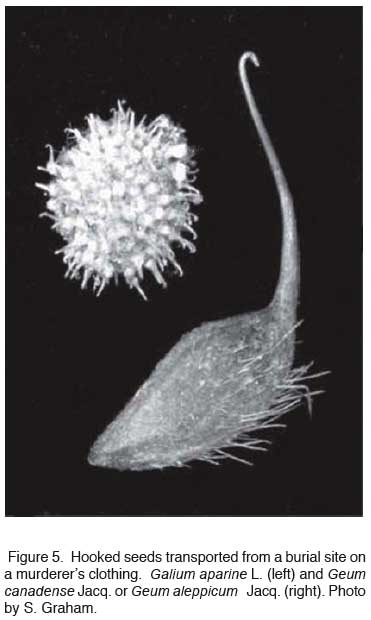Imagine a world where the plants of the planet are harnessed to help its inhabitants find sustainable solutions for some of their most pressing needs – clothing, food, housing, jobs, clean air … clean water. Welcome to planet earth!Crime Scene Botanicals - Forensic Botany(excerpt from the Plant Science Bulletin 52-3)
Early in January, 1935, a man named Arthur Koehler worked his way through crowds of people gathered outside the courthouse in Flemington, New Jersey. He was there to testify in one of the most important trials of the 20th century, the trial of Bruno Richard Hauptmann for the kidnapping of the young son of aviation hero Charles Lindbergh and his wife Anne. Dr. Koehler was an expert on wood anatomy and identification at the Forest Products Laboratory, United States Forest Service in Madison, Wisconsin and what was unique about the particular testimony he was about to give was that it dealt with the structure of wood, namely the wood of the ladder used by the kidnapper. Presenting that kind of evidence was highly unusual, there was little precedence for it, and it was not clear it would even be allowed. The use of scientific expert witnesses was an uncommon and limited practice at that time and botanical evidence had little standing in the criminal courts. The defense argued strongly against allowing Dr. Koehler to testify, saying “there is no such animal known among men as an expert on wood; that it is not a science that has been recognized by the courts; that it is not in a class with handwriting experts, with fingerprint experts, or with ballistic experts... The witness probably may testify as an experienced carpenter or something like that, …. but when it comes to expessing an opinion as an expert or as a scientist, why that is quite different indeed. We say that the opinion of the jurors is just as good...” (Pope 1935). The judge responded, in what we can now consider to be an historical moment for forensic plant science, “I deam [sic] this witness to be qualified as an expert” (Trenchard 1935). Koehler subsequently went on in the trial to demonstrate how the wood of the ladder, beyond any doubt, linked Hauptmann directly to the crime. The ladder was a unique design, homemade, and in 3 parts that could be disassembled to fit in a car.
Koehler presented three kinds of information from his study of the ladder - 1) identification of the wood used, 2) physical marks left by tools on the wood, and 3) comparisons of the wood structure. He was able to determine that the wood used in the ladder was of four kinds: douglas fir (Pseudotsuga menziesii (Mirb.) Franco), 2 types of pine (Pinus ponderosa Dougl. ex Laws. and Pinus echinata Mill., or a close species, commonly called yellow pine) and birch (Betula sp., probably B. alba L.) used for the connecting dowels. In making the identifications he saw the characteristic presence in pine of very thin epithelial cells lining the resin canals, while in douglas fir he distinguished characteristic thick-walled cells lining the canals and faint spiral markings along the length of the tracheids (Fig. 1). The wood of the top left rail had clearly been used before. It had been sawn away from a bigger piece and there were nail holes present made by old-fashioned square-headed nails. Koehler alerted authorities to look for a missing board in any place connected with a future suspect. Remarkably, Koehler using scarcely visible planer markings was able to trace the some of the pine back to its original mill source in McCormick, South Carolina and then forward to the National Lumber and Millwork Co. in the Bronx, NY just 10 blocks from Hauptmann’s home. This was prior to Hauptmann’s arrest after passing a bill from the ransom money. A week after the arrest, police realized that one of the floor boards in Hauptmann’s attic had been partly cut away. Koehler was able to show in the trial that the attic board and the ladder rail had once been a single board by the exact match of annual rings (Fig. 2) and importantly, he demonstrated that patterns of annual rings are unique so that no other random board would have an absolutely identical pattern, just as today we demonstrate that portions of our DNA are unique to each individual. The wood anatomical evidence ultimately was one of the most incriminating and unshakable pieces of evidence that led to Hauptmann’s conviction and eventual electrocution for the kidnapping (Graham, S. 1997). Since that trial, what is termed forensic botany, or the use of plant remains to help solve crimes or other legal problems, has been widely accepted as valid scientific evidence by the courts. If the wildly popular televison crime shows like CSI, Law and Order, Cold Case, and many others reflect to some degree how real life detective work proceeds, then plants are now beginning to play an increasing role in solving crimes. In February this year in a TV episode of “Bones”, one of the forensic anthropologists finds part of an ear bitten off the killer of a young woman. On the ear is ear wax within which pollen is embedded. As the story continues, the pollen is identified as a species of the grass genus Eragrostis, a species said to grow only in South Africa, and this leads the scientists to a suspect who has just come from there. I comment further on this story later, but the point here is that although this particular case is fiction, plants or parts of plants can provide significant supporting, sometimes, crucial evidence in solving crimes. The reasons for this are several: 1) plant remains can be found almost everywhere; 2) they offer multiple sources of evidence, both macroscopic and microscopic, such as pieces of wood, (even as charcoal), seeds, fruits, leaves, twigs, plant hairs, microscopic air-borne pollen and spores, or in aquatic environments, algal cells; 3) their morphological diversity allows us to identify them and from the identification gather other useful information such as the season or geographical location in which a crime took place, whether a body has been moved following a murder; if a body is buried, how long it has been buried, and whether a suspect was present at the crime scene. Pollen and spores, in particular, have all the useful characters just mentioned. Being widespread in nature in the air and on most surfaces, we breathe them into our lungs and they stick to our clothes.
Pollen and spore exines are amazingly diverse, sometimes even to the species level, and their production is generally seasonally and often geographically restricted, thus their presence can point to a specific season, sometimes even a specific location, in which a crime was committed (Szibor, R. et al. 1998). There are many published examples of pollen morphology among related families or within families or genera that illustrate this diversity and consequently their usefulness as trace evidence (e.g. Nowicke and Skvarla 1977, Caryophyllales; Graham, A. and Barker 1981, Fabaceae, Caesalpinioideae; Patel et al. 1984, Myrtales; Bruce and Dettmann 1996; Fig. 3). In addition, they have other advantages. They are slow to decay; pollen can be retrieved from rocks millions of years old, a valuable asset for oil companies and archeologists. Because they are microscopic, they remain unseen, silent witnesses and even if they were visible, unlike fingerprints, they would be nearly impossible to eliminate from a crime scene. A recent example from New Zealand illustrates how pollen as trace evidence was used to solve a crime (Mildenhall 1998). In Christchurch in 1997, a young woman was grabbed, pulled into an alleyway, and raped. Although shaken, she was able to describe the assailant and shortly after a man matching her description was arrested. The suspect admitted being in the area and noticing this woman, who seemed a little distressed, he said he stopped to ask her if she was OK. Now, he claimed, she must be putting his face on the face of the rapist, because he had not been in the alleyway. There was no DNA evidence, but the police noted dirt-stains on his clothes. These, he said, came from his yard where he was working on his car. The alleyway where the crime occurred was lined along one side by a row of low flowering shrubs of wormwood, Artemisia arborescens L. a Mediterranean native. The shrubs had been broken and flattened during the struggle that led up to the rape. The suspect’s clothes with the dirt stains were sent for analysis together with a comparative sample of soil from the crime scene to the forensic palynology laboratory of the New Zealand Geological Survey. The soil sample was dominated, as might be expected by pollen of Artemisia (77%), much of it occurring in clumps, indicating the source was at the scene and had not merely blown in. The pollen of this genus has a distinctive, echinate (spiny), very thick-walled exine. There was a mix of mix of fresh pollen and somewhat older, darker colored grains, as well as an unusual large, thick-walled fungal spore in the soil sample, and other spore and pollen types in very low percentages. The same Artemisia pollen dominated the clothing sample (53%), again occurring mainly in clumps, in a mix of fresh and older grains, and the same thick-walled fungal spore type was abundant. The percentage of Artemisia was so high that the only explanation was that the clothing was in direct, forceful contact with an Artemisia plant. Investigators searched for wormwood near the suspect’s home, and other places he visited but found none. The species is not common in New Zealand, being only occasionally planted in gardens. The forensic laboratory had processed over 1000 pollen samples from many localities in New Zealand and never found Artemisia in more than a trace amount, so the chances of finding large amounts were statistically 1 in 1000, but in actual fact, chances were certainly much lower. The fungal spores were also rare. This pollen and spore evidence was presented at the trial, the suspect was convicted, and was given an 8 year prison sentence. Similar comparative pollen evidence led to conviction of a murder suspect in northern Australia (Milne 2005), and in a civil case where pollen intake to a gasoline line was cited as the cause of a fatal plane crash, pollen provided important evidence negating the claim (Graham, A. 1997).
Returning to the use of plants in crime TV shows, and specifically the finding of Eragrostis grass pollen in ear wax that led to a suspect, the science of this story presents a bit of a problem. Although many plant groups have spectacular pollen morphology, not all pollen is remarkable structurally and sadly the pollen of grasses, one of the most common and widespread plant families in the world, is nearly as feature-less as a ping-pong ball, so it would have been impossible to identify an Eragrostis plant to genus or species and pinpoint the geographical source based on pollen (Fig. 4). An interesting exception in the pollen of grasses is cultivated corn which has extremely large pollen, ca. 100um in diameter, compared with a more average pollen diameter of ca. 35um.. Seeds and fruits, like pollen, very often give away their identity by their specialized features, especially if they are provided with hooks or barbs. These structures have evolved to aid in dispersing progeny away from competition with the parent plant and are very effective in their role, as anyone who has walked through a field in summer or fall has experienced. In 1997 in Ohio, I was called by the sheriff’s department of Champaign Co. near Columbus, Ohio to identify some seeds (actually single-seeded fruits) associated with the murder of two children. The children were found buried in an area at the shady wooded margin of a local cemetery not long after they were reported missing by the stepfather. He soon became a suspect. I identified the seeds as from Geum canadense Jacq. (or possibly Geum aleppicum Jacq. with very similar fruits), commonly known as avens, in the Rosaceae and from Galium aparine L., bedstraw, in the Rubiaceae, species of shaded to partly sunny places in dry to moist somewhat disturbed woodlands (Fig. 5). The seeds had been removed from a blanket and the stepfather’s clothing recovered at his house. He claimed the seeds came from his small farmyard, but neither plant occurred in his open weedy yard, nor would they have been expected there. Both species were found at the gravesite. The seed evidence linked the suspect to a wooded area such as that of the gravesite and was part of the evidence introduced at the trial (State of Ohio vs. Kevin Neal, 2000). He was convicted of the two murders and is now serving two life sentences. Similar investigations employing seed evidence from crime scenes have been reported by Lipscomb and Diggs (1998) and in a case investigated by David Hall, summarized at https://www.austincollege.edu/wp-content/uploads/2015/07/forensic-botany-paper.pdf.
Botanical trace evidence is also obtained from plant cells found in gastric contents. Many of the common foods we eat contain seeds or other plant parts with specialized cells having thick walls of cellulose and lignin. Because these materials do not digest or digest only slowly they can be present in partially digested stomach contents or excreted in feces, and are often able to be identified in degraded form (Bock, J. H. et al. 1988). It is sometimes possible to determine components of a victim’s last meal which, in turn, can provide clues to the setting or timing of death. In a particularly tragic case in London in 2001, partially digested plant material even gave a clue to the victim’s homeland and suggested a reason for his death. The case began in September, 2001, when the torso, minus limbs and head, of a young boy 4-7 years in age was found in the Thames River. There was little to use for identification based on standard techniques and there were no corresponding missing child reports. Scotland Yard suspected from the condition of the body, which had been deliberately drained of blood, that they might be dealing with a ritual killing – a human sacrifice. They turned to forensic scientists, including a palynologist and a plant anatomist to look for whatever evidence might give them a lead in the case. DNA suggested the child was West African in origin and the contents of the digestive tract revealed alder (Alnus) pollen, a tree native to northern Europe, and was an indication that the child had been in England in the days prior to his death. Of greatest interest was the presence in the stomach and intestines of an unusual assortment of small mineral pieces, clay pellets embedded with minute gold particles, and the remains of some type of bean seed. The anatomy of seeds in some plant families, including the legumes (Fabaceae), the mustards (Brassicaceae), and the tomato-potato family (Solanaceae), is quite distinctive and can even be species-specific in some taxa. By comparing seed coat anatomy from the stomach contents of the boy, the seeds were closely matched by a plant anatomist at the Royal Botanical Gardens in Kew to a highly poisonous legume from West Africa, the Calabar bean (Physostigma venenosum Balf.). Anatomical recognition of legume seeds is possible because the outermost cells of the seed coat consist of a diagnostic palisade layer in which the cells are typically narrow, elongate, and very thick-walled. It is the heavy walls that make them resistant to quick dissolution. The next deeper layer also can be quite diverse and help in narrowing an identification. The presence of Calabar beans in this case, mixed with the other unusual items in the stomach, suggested the child had been given a toxic paralytic voodoo potion. This finding pointed, like the DNA, to areas of West Africa, like Nigeria, where witchcraft is known to be practised still, and it supported the idea that the child had been a human sacrifice. Further investigations, using bone chemistry, narrowed the home of the boy to an area near Benin, Nigeria, where Calabar bean is native and where animal, and rarely human, sacrifice is performed. Thus far, no one has been arrested for the murder but as part of the investigation, a ring trafficking in people from Africa into Great Britain and Germany was uncovered and shut-down and 21 people involved were arrested, including the man who brought the child from Africa (The Guardian 2004; see also National Geographic Channel presentation, “The Witchcraft Murder”, 13 Feb 2005). Today the fastest growing component of botanical evidence in forensics is molecular evidence. We are in early stages of this type of plant trace evidence. The first instance in which data from plant DNA was accepted as admissible evidence in a criminal case was in Arizona in 1992. In that case, State of Arizona vs. Bogan, a young woman was murdered and her body dumped in the desert. The suspect was taken into custody after his pager was found near the site. He claimed he had given the woman a ride and that she had stolen his wallet and pager from his truck. A member of the Maricopa Co. investigating team, Charles Norton, happened to notice that one of the palo verde trees (Parkinsonia microphylla Torr.) at the scene was freshly scraped, possibly by the murder’s vehicle. On an impulse he picked some seed pods hanging from the tree; later, the same kind of pods were found loose in the open truck bed of Bogan’s truck and Norton, knowing that DNA could identify human individuals, thought perhaps the pods could be linked by their DNA to the tree at the crime scene. Dr. Tim Helentjaris, a geneticist at the University of Arizona agreed to try. Using RAPDs (Randomly Amplified Polymorphic DNA) to produce profiles of visualized DNA fragments- a kind of ‘fingerprint’ of individuals being studied, he was able to match the DNA from the 2 seed pods found in the truck to the seed pods collected from the tree at the scene and only to that tree. This was because the palo verde trees had an exceptionally high degree of intraspecific genetic variation (Yoon 1993). The truck, if not the suspect, had definitely been at the site. The jurors agreed Helentjaris’s findings were very influential in their decision to find Bogan guilty of first degree murder. In recent plant DNA research, botanists at the Australian National University in Canberra, Australia have produced a prototype identification system for grasses based on DNA, a kind of molecular taxonomic key (Ward et al. 2004). Although grass pollen is not generally helpful in forensics, other parts of grasses like seeds and stem or leaf fragments can be a good source of DNA and because grasses are among the most likely plants to be encountered as trace evidence, a means of identification would be a valuable tool. In their study, using primers designed for the purpose, they sequenced parts of the mitochondrial genome that were representative of subfamily, tribe and genus ranks within a test set of 20 samples. These were then used to identify 25 unknown grass samples in a blind test. With more complete representation, the possibility of identification of many more kinds of grasses by molecular means seems to be within reach. It is unfortunate that in this country, botanical trace evidence is still poorly integrated into crime scene analyses, in spite of its potential in many situations. In 1990, a survey of 30 of the largest forensic laboratories in the United States found that only 2 knew pollen could be used as a forensic tool (Bryant and Mildenhall 1990). This figure has not risen significantly in the past 16 years even though criminal investigations are becoming more sophisticated in treating other aspects of trace evidence (Bryant and Jones in press). In great part, the failure to incorporate botanical evidence in investigations is due to lack of knowledge about plants by personnel who study crime scenes and so fail to collect it. The FBI’s 2003 Handbook of Forensic Services (www.fbi.gov) mentions the usefulness of wood and cotton fibers and explains how these should be submitted for examination, but refers to no other kind of supporting plant evidence. Unless plant parts are conspicuously evident, samples of plant materials are not standardly taken, nor are specialists brought in to record critical observations of vegetation that could yield credible evidence. The assessment of plant evidence requires welltrained specialists and frequently also access to extensive reference collections. Today, specialists in plant systematics, plant anatomy and morphology, and palynology are relatively few in number, and aging, and younger replacements are increasingly rare. The balance in plant science research has tipped so heavily toward molecular-based research that students interested in whole plant-based studies find fewer and fewer relevant botany courses available at universities, little research support at the graduate level, and few job opportunities. The value of botanical trace evidence in criminal and civil cases has been clearly demonstrated and is accepted by the courts. Justice can now only be more fully served when law enforcement agencies and other relevant groups recognize and take full advantage of its utility and open employment opportunities for botanically trained investigators. Academic institutions, for their part, must once more appreciate the value of providing well-rounded instruction in botany within their undergraduate biological programs. Literature Cited Bock, J. H., M. A. Lane, D. O. Norris. 1988. Identifying Plant Food Cells in Gastric Contents for Use in Forensic Investigations: A Laboratory Manual. U. S. Dept. of Justice, National Institute of Justice Research Report, January 1988. Bruce, R. G. and M. E. Dettmann. 1996. Palynological analyses of Australian surface soils and their potential in forensic science. Forensic Science International 81: 77- 94. Bryant, V. M., Jr. and G. D. Jones. 2006. Forensic palynology: current status of a rarely used technique in the United States of America. Forensic Science International: in press. Bryant, V. M., Jr. and D. C. Mildenhall. 1990. Forensic palynology in the United States of America. Palynology 14: 193-208. Graham, A. 1997. Forensic palynology and the Ruidoso, New Mexico plane crash – the pollen evidence II. In: Graham, A. Symposium Ed., Forensic Chemistry, Soil Analysis, Entomology, Botany, Palynology, and other Aspects of Non-genetic-marker Biology. Journal of Forensic Sciences 42: 391-393. Graham, A. and G. Barker. 1981. Palynology and tribal classification in the Caesalpinioideae, Pp 801-834 in: R. M. Polhill and Peter Raven, Eds., Advances in Legume Systematics. HMSO, London. Graham, S. 1997. Anatomy of the Lindbergh kidnapping. Journal of Forensic Sciences 42: 368-377. Lipscomb, B. L. and G. M. Diggs, Jr. 1998. The use of animal-dispersed seeds and fruits in forensic botany. SIDA 18: 335-346. Mildenhall, D. 1998. It takes just a few specks of dust and you are caught. Canadian Association of Palynologists Newsletter 21: 18-21. Milne, Lynn. 2005. A Grain of Truth. How Pollen Brought a Murderer to Justice. Reed New Holland Publ., Sydney, Australia. The Guardian. 2004. Jail for torso case people smuggler. 27 Jul 2004. United Kingdom. Nowicke, J. W. and J. J. Skvarla. 1977. Pollen morphology and the relationship of the Plumbaginaceae, Polygonaceae, and Primulaceae to the order Centrospermae. Smithsonian Contributions to Botany 37: 1-64. Patel, V. C., J. J. Skvarla, and P. H. Raven. 1984. Pollen characters in relation to the delimitation of Myrtales. Ann. Missouri Bot. Gard. 71: 858-969. Pope, F. State of New Jersey vs. Bruno Richard Hauptmann, Trial transcript, 1935: 3796. Szibor, R., C. Schubert, R. Schöning, D. Krause, and U. Wendt. 1998. Pollen analysis reveals murder season. Nature 395: 449-450. Trenchard, T. W. State of New Jersey vs. Bruno Richard Hauptmann, Trial transcript, 1935: 3805. Ward, J., R. Peakall, S. R. Gilmore, and J. Robertson. 2005. A molecular identification system for grasses: a novel technology for forensic botany. Forensic Science International 152: 121-131. Yoon, C. K. 1993. Botanical witness for the prosecution. Science 260: 894-895. Thanks for stopping by!! The information contained in this "Plant Talking Point" was supplied by Dr. Shirley Graham, Missouri Botanical Garden, and is BSA APPROVED. |
